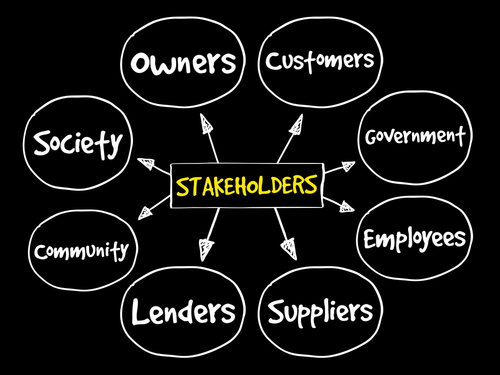
In our previous post, A Modern Approach to Identifying Your Target Market, I emphasized that the first critical step in establishing brand positioning is identifying the target audience—the "who" (e.g., stakeholders) the brand is designed to serve. While the target audience remains an essential part of the brand positioning model, it needs to be considered more expansively.
Expanding the Definition of Target Audience
While the target audience remains an essential part of the brand positioning model, it needs to be considered more expansively. Traditional considerations of target audiences often fall prey to two potential shortcomings:
Lack of diversity: The current definition assumes a brand operates with only one target. However, it's almost naïve to believe a brand today has a singular audience.
Stakeholder exclusion: A target audience need not necessarily be customers; most companies have additional stakeholders who can dramatically affect the company’s destiny and who should be considered when positioning brands.
Real-World Examples of Expanding and Diversifying Target Audiences
Disney+: Blending Traditional and Digital Media
Disney has expanded its target audience by blending traditional media with digital streaming through Disney+. Initially focused on family-oriented content, Disney+ now includes more diverse content appealing to different age groups and interests. This shift has not only attracted younger audiences but also engaged older demographics who appreciate Disney’s classic catalog and new original series.
What Impact Does Disney+ Have?
Disney+ isn't just a streaming service; it's a comprehensive platform integrating Disney's various brands, from Marvel and Star Wars to National Geographic. This multifaceted approach attracts a broad audience base, enhancing brand loyalty and increasing subscription rates. The strategic inclusion of exclusive content and nostalgic titles ensures continuous engagement across multiple audience segments.
Concerns and Speculations
Some critics argue that Disney might spread itself too thin by trying to cater to all demographics. However, the company’s strategic content segmentation and investment in high-quality productions have mitigated these concerns so far, keeping Disney+ at the forefront of the streaming wars,
Nike: Embracing Diversity and Sustainability
Nike has expanded its target audience by embracing diversity and sustainability in its branding strategy. The company's campaigns now highlight diverse athletes and advocate for social causes, appealing to a broader, more socially conscious audience.
What Impact Does Nike’s Strategy Have?
Nike's emphasis on sustainability and representation resonates with younger consumers, particularly Gen Z, who prioritize these values. The brand's authentic approach to marketing, using real stories and diverse faces, strengthens its connection with this audience, driving both brand loyalty and sales.
Concerns and Speculations
Some believe Nike’s focus on social issues might alienate certain segments of its traditional customer base. However, the positive reception from younger demographics and the overall increase in brand engagement suggest that the benefits outweigh the risks (Influencer Marketing Hub).
Beyond Traditional Customer Segments
Beyond targeting multiple customer segments, no law says the only important audiences for brands are customers. Many other categories of stakeholders can directly impact—positively or negatively—a brand’s marketplace performance. In the case of brands like Disney and Nike, people or entities other than customers make up at least one important target audience.
So, how can you stand out? Consider your target audience expansively. Embrace the diversity of stakeholders who shape your brand's destiny. What does this mean for your brand? More inclusive and holistic brand positioning, ensuring long-term success and relevance.
Recent Posts
Posts by Topics
- Brand Strategy (57)
- Brand Strategy Consulting (28)
- Brand Differentiation (27)
- Customer Experience (24)
- Brand Positioning (22)
- Marketing Strategy (9)
- Brand Extension Strategy (8)
- Customer Behavior (8)
- Brand Architecture Strategy (7)
- Brand Extension (7)
- Brand Growth (7)
- Brand Portfolio & Architecture (7)
- Brand Purpose (7)
- Brand Value Proposition (7)
- Brand Engagement (6)
- Brand Portfolio Strategy (6)
- Brand Storytelling (6)
- Rebranding Strategy (6)
- Brand Awareness (5)
- Brand Image (5)
- Branding (5)
- Rebranding (5)
- Technology (5)
- B2B Brand Strategy (4)
- Brand Experience (4)
- Value Proposition (4)
- Brand Extendibility (3)
- Brand Metrics (3)
- Brand Repositioning (3)
- Corporate Branding (3)
- Differentiation Strategy (3)
- Measurement & Metrics (3)
- Brand Engagement Strategy (2)
- Brand Portfolio (2)
- Brand Promise (2)
- Brand Voice (2)
- Digital Marketing (2)
- Digital and Brand Experience (2)
- Employee Brand Engagement (2)
- Brand Architecture (1)
- Brand Development (1)
- Brand Equity (1)
- Brand Identity (1)
- Brand Measurement (1)
- Brand Name (1)
- Brand Strategy Consultants (1)
- Brand Strategy Firms (1)
- Digital Strategy (1)
- Internal Branding (1)
- Messaging (1)

